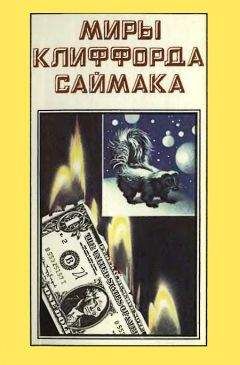4
Charles Taylor, A Secular Age, Cambridge, Mass.: Belknap Press/Harvard University Press, 2007, pp. 20, 44.
Taylor, op. cit.
Richard Kearney, Anatheism (Returning to God after God), New York: Columbia University Press, 2010.
London Times, 5 January 2011, p. 1.
О поклонении мотоциклу «Ли-Энфилд» в Индии см. «Travellers flock to find roadside comfort at the shrine where Royal Enfield is God», London Times, 5 February 2011.
Peter L.Berger (ed.), The Desecularisation of the World, Resurgent Religion and World Politics, Washington DC: Ethics and Public Policy Center/William B. Eerdmans Publishing Company, Grand Rapids, Michigan, 1999, p. 2.
Berger, op. cit.
Eben Alexander, Proof of Heaven: A Neurologist’s Journey to the Afterlife, New York: Piatkus, 2012, passim.
Pippa Norris and Ronald Inglehart, Sacred and Secular: Religion and Politics Worldwide, Cambridge UK: Cambridge University Press, 2004, p. 3.
Norris and Inglehart, op. cit., p. 13.
Ibid., p. 14.
Ibid., p. 221.
Ibid., p. 16.
Ibid., p. 23.
John Micklethwait and Adrian Wooldridge, God Is Back: How the Global Revival of Faith Is Changing the World, London: Allen Lane, 2009. Rodney Stark and Roger Finke, Acts of Faith, Los Angeles, Berkeley and London: University of California Press, 2000, pp. 4, 79. London Times, 2 May 2009, pp. 58–59.
Micklethwait and Wooldridge, op. cit., p. 58, что также цитируется в London Times, 2 May 2009.
Norris and Inglehart, op. cit., p. 231. Jonathan Haidt, The Righteous Mind: Why Good People are Divided by Politics and Religion, New York and London, 2013, pp. 311–313.
Norris and Inglehart, ibid.
Nigel Biggar, “What's it all for?” Financial Times, 24 December 2008.
“God eclipsed by ghost believers,” London Daily Mail, 24 November 2008. Thomas Dumm, Loneliness as a Way of Life, Cambridge, Mass.: Harvard University Press, 2010.
Michael Foley, The Age of Absurdity, New York: Simon & Schuster, 2011. Ben Okri, “Our false oracles have failed. We need a new vision to live by,” London Times, 30 October 2009. Jeanette Winterson, “In a crisis art still asks simply that we rename what is important,” London Times, 1 November 2008.
London Times, 4 September 2009, p. 15. Betsey Stevenson and Justin Wolfers, “The Paradox of Declining Female Happiness,” American Economic Journal, vol. 1 (2), pp. 190–225, August 2009.
New York Times, 20 January 2013, p. A3.
Curtis Cate, Friedrich Nietzsche, London: Hutchinson, 2002, p. 395.
Cate, op. cit., p. 395.
Luc Ferry, L’Homme-Dieu ou le sens de la vie, Paris: Grasset, 1996. Man Made God: the Meaning of Life, trans. David Pellauer, Chicago: Chicago University Press, 1995. See also Ferry, What Is the Good Life?, Chicago University Press, 2009.
Ferry, Man Made God, p. 153.
Ibid., p. 180.
Ibid., p. 183.
Ibid., pp. 167, 181.
Jennifer Michael Hecht, Doubt as History: the Great Doubters and Their Legacy of Innovation, from Socrates and Jesus to Jefferson and Emily Dickinson, San Francisco: Harper San Francisco, 2004, p. 371.
Owen Chadwick, The Secularisation of Europe in the Nineteenth Century, Cambridge UK: Cambridge University Press, 1975, p. 89 and passim. См. также: James Thrower, The Alternative Tradition: Religion and the Rejection of Religion in the Ancient World, The Hague and New York: Mouton, 1980.
Larry Witham, The Measure of God: History’s Greatest Minds Wrestle with Reconciling Science and Religion, San Francisco, Harper, 2005, passim.
Callum Brown, The Death of Christian Britain, Understanding Secularisation 1800–2000, 2nd edn, London and New York: Routledge, 2009; см. особенно ch. 6. Olivier Roy, Holy Ignorance: When Religion and Culture Part Ways, trans. Roy Schwartz, London: Hurst, 2010, особенно chs 4, 7.
Chadwick, op. cit., p. 133.
Steven Aschheim, The Nietzsche Legacy in Germany, Ca. and Oxford, England: University of California Press, 1992, p. 17.
Aschheim, op. cit., p. 19.
Ibid., p. 20.
Ibid., p. 22.
Ibid., p. 25.
Seth Taylor, Left-wing Nietzscheans: The Politics of German Expressionism, Berlin: Walter de Gruyter, 1990. Richard Schacht (ed.), Nietzsche, Genealogy and Morality: Essays in Nietzsche’s Genealogy of Morals, Berkeley and London: University of California Press, 1994, p. 460.
Aschheim, op. cit., p. 31.
Ibid., p. 33.
Ibid., p. 39.
Ibid.
См. иное мнение у Bernard Shaw, The Sanity of Art: An Exposure of the Current Nonsense about Artists Being Degenerate, London: New Age Press, 1908.
Joachim Kohler, Nietzsche and Wagner: A Study in Subjugation, trans. Ronald Taylor, New Haven and London: Yale University Press, 1998, chapters 4 and 9.
Aschheim, op. cit., p. 40.
Ibid., p. 43.
Ibid., p. 45.
Ibid., p. 49.
Paul Bishop (ed.), A Companion to Nietzsche: Life and Works, Rochester, NY: Camden House, 2012, pp. 51–57.
Aschheim, op. cit., p. 51.
Ibid., p. 52.
Ibid., p. 57.
Martin Green, Mountain of Truth: The Counterculture Begins: Ascona, 1900–1920, Hanover and London: Tufts University Press, New England, 1986, p. 185.
Green, op. cit., p. 186.
Ibid., p. 56.
Ibid., p. 68.
Ibid., p. 71.
Joachim Köhler, Zarathustra’s Secret: The Interior Life of Friedrich Nietzsche, trans. Ronald Taylor, New Haven and London: Yale University Press, 2002, особенно глава 10.
Aschheim, op. cit., p. 221.
Ibid., p. 70.
Ibid., p. 102.
Eugene L.Stelzig, Hermann Hesse’s Fictions of the Self: Autobiography and the Confessional Imagination, Princeton and Oxford: Princeton University Press, 1988, pp. 117–118.
Aschheim, op. cit., p. 64.
Ibid., p. 60.
Green, op. cit., p. 95.
Ibid., p. 96.
Ibid., pp. 99–100.
Susan A.Manning, Ecstasy and the Demon: Feminism and Nationalism in the Dances of Mary Wigman, Los Angeles, Berkeley and London: University of California Press, 1993, p. 127.
Aschheim, op. cit., p. 102.
Ibid., p. 103.
Ibid., p. 106.
Ibid., p. 107.
Rudolf Laban, The Mastery of Movement, Plymouth: Northcote House, 1988. John Hodgson, Mastering Movement: The Life and Work of Rudolf Laban, London: Methuen, 2001, pp. 72, 82–83.
Aschheim, op. cit., p. 143.
Ibid., pp. 143–144.
Tom Sandqvist, Dada East: The Romanians of Cabaret Voltaire, Cambridge, Mass.: MIT Press, 2006, pp. 87, 188.
Aschheim, op. cit., p. 61.
Ibid., pp. 62–63.
Manning, op. cit., pp. 160–161.
Ibid., p. 115.
Neil Donohue (ed.), A Companion to the Literature of German Expressionism, Rochester, NY, Woodbridge: Camden House, 2005, pp. 175–176.
Aschheim, op. cit., p. 65.
J.M.Ritchie, Gottfried Benn: The Unreconstructed Expressionist, London: Wolff, 1972.
Aschheim, op. cit., p. 68.
Ibid., p. 112.
Ibid., p. 117.
Ibid., p. 124.
Adian Del Caro, Nietzsche contra Nietzsche: Creativity and the Anti-Romantic, Baton Rouge: Louisiana State University Press, 1989.
Louis Menand, The Metaphysical Club, Cambridge UK: Cambridge University Press, 2001, pp. x—xii.
Peter Watson, Ideas: A History from Fire to Freud, London: Weidenfeld& Nicolson, 2005, p. 936.
Ibid., p. 935.
Edward Lurie, Louis Agassiz: a Life in Science, Chicago: Chicago University Press, 1960, pp. 346–347.
Watson, op. cit, p. 944.
Гиффордские лекции – одно из наиболее выдающихся мероприятий по чтению серии лекций во всем мире. Их основоположником стал шотландский судья Эдам Гиффорд, умерший в 1887 году, который хотел поддерживать живой диалог о науке и «любых вопросах относительно представлений человека о боге или Бесконечном». Он завещал ежегодно проводить лекции в одном из четырех исторических университетов Шотландии – в Абердине, Эдинбурге, Глазго и Сент-Эндрюсе. Первые лекции были прочитаны в 1888 году, и теперь на их основе вышло более двух сотен книг, написанных самыми знаменитыми богословами, философами и учеными. Среди лекторов было восемь Нобелевских лауреатов, и здесь можно вспомнить о таких людях, как Вильям Джемс, Дж. Дж. Фрезер, Артур Эддингтон, Альфред Норт Уайтхед, Джон Дьюи, Альберт Швейцер, Карл Барт, Рейнгольд Нибур, Нильс Бор, Арнольд Тойнби, Пол Тиллих, Рудольф Бультман, Вернер Гейзенберг, Раймон Арон, Ханна Арендт, Альфред Айер, Айрис Мердок, Фримен Дайсон, Чарльз Тейлор, Аласдер Макинтайр, Мэри Миджли, Джордж Стайнер, Хилари Патнэм, Марта Нуссбаум и Роджер Скратон. В своей книге о Гиффордских лекциях Ларри Уитем называет их «окном в то столетие, когда естественные науки со всей силой столкнулись с библейской религией». На протяжении этого столетия, говорит он, в лекциях можно было наблюдать четыре этапа: столкновение великих философских систем с научным материализмом; развитие наук о материале – антропологии, психологии, физики, социологии и исторической критики, – отразившихся на понимании религии; великий бунт Запада против науки и разума – идея бога как «совершенно иного»; и наконец, когда доминирующие системы представлений исчезли (по крайней мере, на Западе), – возрождение рационального поиска бога. Многие из этих имен и тем мы еще встретим на страницах данной книги.





